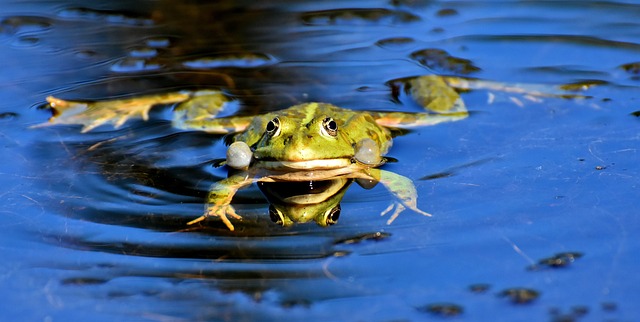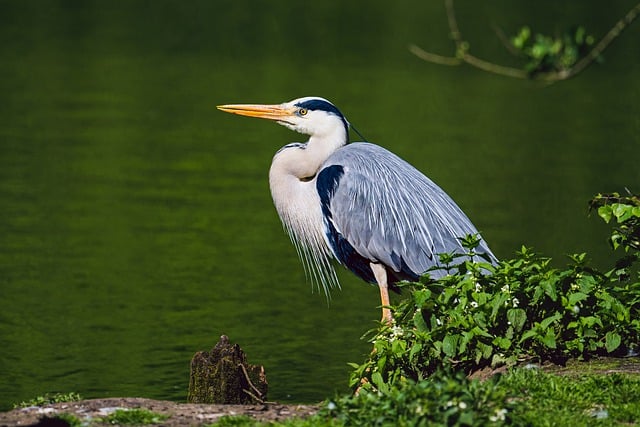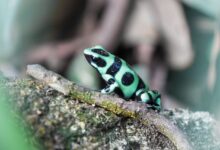The Hidden World of Freshwater Animals

Freshwater ecosystems are home to a diverse array of fascinating animals that often go unnoticed in the hidden world beneath the water’s surface. From fish and amphibians to invertebrates, these creatures have adapted to thrive in freshwater environments, showcasing remarkable features and behaviors.
Table of Contents
The Diversity of Freshwater Animals
• Exploring the Aquatic Ecosystem
Freshwater habitats encompass a wide range of environments, including rivers, lakes, ponds, and wetlands. These ecosystems are teeming with life, supporting an incredible diversity of animal species. Freshwater animals have evolved unique adaptations to survive and thrive in their watery homes.
• Adaptations for Life in Freshwater
Freshwater animals possess a variety of adaptations that enable them to navigate their aquatic surroundings. Many fish have streamlined bodies and fins for efficient swimming, while amphibians like frogs and salamanders have evolved specialized lungs and permeable skin that allows them to respire in both water and air. Invertebrates, such as insects and crustaceans, have developed specialized appendages and respiratory systems suited for underwater life.

Common Freshwater Animals
• Fish
Fish are the most well-known inhabitants of freshwater ecosystems. They come in a multitude of shapes, sizes, and colors. From the vibrant hues of tropical freshwater fish like guppies and bettas to the sleekness of predatory species like pike and catfish, the world of freshwater fish is a sight to behold.
• Amphibians
Amphibians, including frogs, toads, and newts, are equally at home on land and in the water. These unique creatures undergo metamorphosis from aquatic tadpoles to terrestrial adults. They play a crucial role in maintaining the delicate balance of freshwater ecosystems and serve as indicators of environmental health.
• Invertebrates
Freshwater invertebrates encompass a broad range of species, including insects, crustaceans, mollusks, and worms. These small but mighty creatures fulfill essential roles in the ecosystem, contributing to nutrient cycling and serving as a vital food source for larger animals. Examples of freshwater invertebrates include dragonflies, water beetles, freshwater mussels, and leeches.

Unique and Lesser-Known Freshwater Animals
• Axolotl
The axolotl, also known as the Mexican walking fish, is a fascinating amphibian that remains in its larval form throughout its life. Found exclusively in Mexico’s freshwater lakes and canals, this unique creature displays remarkable regenerative abilities, capable of regrowing lost body parts.
• Electric Eel
Contrary to its name, the electric eel is not an eel but a species of knife fish. It is native to the rivers of South America and possesses specialized electric organs that generate powerful electric shocks. These shocks are primarily used for navigation, communication, and hunting prey.
• Water Strider
Water striders are small insects that can effortlessly glide on the surface of freshwater bodies, thanks to their long, slender legs that distribute their weight and utilize surface tension. These remarkable insects are often observed gracefully skating across the water’s surface, preying on smaller insects that fall into the water.
• Giant Freshwater Prawn
The giant freshwater prawn is a notable crustacean found in various freshwater habitats worldwide. It can grow to impressive sizes, reaching up to a foot in length. This prawn plays a vital ecological role, scavenging on decaying organic matter and serving as a food source for larger fish.
• Freshwater Stingray
Freshwater stingrays inhabit rivers and freshwater lakes in tropical regions, showcasing their unique flat bodies and long, slender tails armed with venomous spines. These enigmatic creatures spend much of their time hidden beneath sandy riverbeds, emerging to hunt for small fish and crustaceans.

Threats to Freshwater Animal Species
The hidden world of freshwater animals faces numerous threats that endanger their survival and the delicate balance of freshwater ecosystems they inhabit.
• Habitat Loss
Human activities, such as dam construction, deforestation, and urbanization, have resulted in the loss and degradation of freshwater habitats. Destruction of their natural habitats forces many freshwater animals into smaller areas, making them more vulnerable to predation and reducing their chances of successful breeding.
• Pollution
Pollution from industrial and agricultural sources poses a significant threat to freshwater animals. Contaminants like heavy metals, pesticides, and plastics find their way into freshwater ecosystems, negatively impacting the health and reproductive success of animals. Pollution also disrupts food chains and can lead to the bioaccumulation of toxins at higher trophic levels.
• Climate Change
The warming of the planet due to climate change affects freshwater ecosystems in numerous ways. Rising temperatures, altered rainfall patterns, and increased frequency of extreme weather events can disrupt the delicate balance of these habitats. Freshwater animals may struggle to adapt to rapidly changing conditions, leading to population declines and loss of biodiversity.
Conservation Efforts for Freshwater Animals
Recognizing the importance of freshwater animals and the threats they face, conservation efforts are underway to protect these invaluable creatures and their habitats. Initiatives include the establishment of protected areas, habitat restoration projects, and the implementation of sustainable water management practices. Additionally, public awareness and education play a crucial role in promoting responsible stewardship of freshwater ecosystems.

Conclusion
The hidden world of freshwater animals is a treasure trove of remarkable species and adaptations. From the vibrant fish to the elusive invertebrates, these creatures bring life and beauty to freshwater ecosystems. However, their existence is under constant threat from habitat loss, pollution, and climate change. We must take action to preserve these fragile environments and the diverse array of lives they support.
FAQs
Q: Why are freshwater animals important?
Freshwater animals contribute to ecosystem functioning, and nutrient cycling, and serve as indicators of environmental health.
Q: What are some examples of endangered freshwater animals?
Examples of endangered freshwater animals include the Chinese giant salamander, the vaquita porpoise, and the Irrawaddy dolphin.
Q: Can freshwater animals live in saltwater?
No, freshwater animals are adapted to live in freshwater environments and cannot survive in saltwater due to osmotic challenges.
Q: How can individuals help protect freshwater animals?
Individuals can contribute by conserving water, reducing pollution, supporting conservation organizations, and advocating for sustainable water management practices.
Q: Are freshwater animals more vulnerable than marine animals?
Freshwater animals face unique challenges due to the fragmentation and degradation of their habitats, making them more susceptible to population declines and extinctions compared to marine animals.


